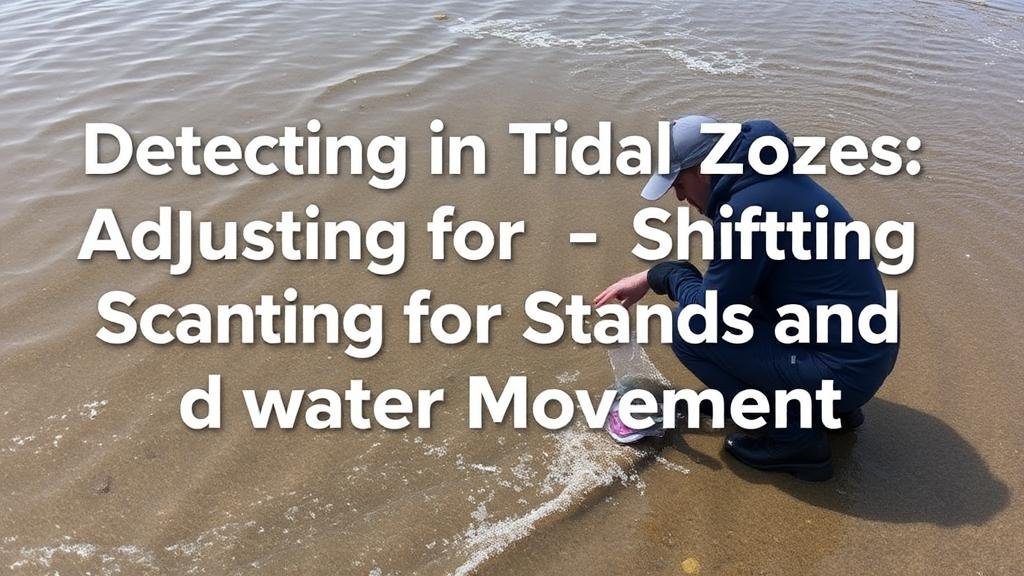Detecting in Tidal Zones: Adjusting for Shifting Sands and Water Movement
Detecting in Tidal Zones: Adjusting for Shifting Sands and Water Movement
Tidal zones are dynamic ecosystems that present unique challenges and opportunities for detection and exploration. These regions, where land meets sea, are influenced by the gravitational pull of the moon and the sun, creating rhythmic patterns of water movement and sediment displacement. This article examines the intricacies of detecting within tidal zones, particularly in relation to the effects of shifting sands and fluctuating water levels.
Understanding Tidal Zones
Tidal zones can be broadly classified into several regions based on their proximity to the sea and the characteristics of the environment. primary categories include the supralittoral (above high tide), littoral (between high and low tide), and sublittoral (underwater near the shore) zones. Each of these areas hosts distinct biotic communities and is governed by specific physical and chemical parameters.
- Supralittoral Zone: This is the area above the high tide line, often characterized by wet, sandy soils and less frequent inundation.
- Littoral Zone: Located between the high and low tide marks, this region experiences regular submersion and exposure, creating a diverse habitat.
- Sublittoral Zone: This underwater zone is typically submerged and serves as a critical habitat for aquatic organisms.
Understanding these zones is fundamental for effective detection strategies, as each environment requires tailored approaches to account for its unique dynamics.
Challenges in Detection
Detecting within tidal zones involves multiple challenges stemming from the unpredictable nature of water movement and sediment shifts. Factors such as tides, wave actions, and seasonal changes can drastically alter the landscape, making it imperative for detection methods to be adaptable.
- Shifting Sands: The constant movement of sand can obscure or reveal artifacts, creating challenges in both locating and identifying important finds.
- Water Movement: Variations in water levels can impact direct visibility and accessibility, as well as the functionality of certain detection equipment.
For example, studies conducted on the beaches of the Outer Banks in North Carolina revealed that a single high tide could completely alter the positioning of historical relics, putting them at risk of being buried or washed away entirely.
Technological Approaches to Detection
Various technological solutions can enhance detection efforts in tidal zones, allowing researchers and archaeologists to adapt to shifting conditions. following techniques have proven particularly effective:
- Ground Penetrating Radar (GPR): This non-invasive tool uses radar pulses to image the subsurface, allowing for the identification of buried structures without extensive excavation.
- Magnetometry: By measuring variations in magnetic fields, this method can detect metallic objects or features, even below shifting sands.
- Drone-Based Surveys: Drones equipped with cameras and multispectral sensors can capture high-resolution images and map tidal zones before and after storm events, providing valuable data on changes in the environment.
A case study conducted at the historic site of Cape Canaveral, Florida, utilized GPR to successfully locate and document the remnants of a shipwreck that had been buried beneath layers of shifting sand for decades. Such technologies can significantly enhance the efficiency and accuracy of detection efforts.
Strategies for Adjusting to Environmental Changes
To effectively navigate the complexities presented by tidal zones, it is essential for detection teams to employ strategies that adapt to environmental changes:
- Regular Monitoring: Routine surveys can help track changes in sediment and artifact locations, allowing for timely retrieval and documentation of finds.
- Interdisciplinary Collaboration: Collaborating with environmental scientists can provide insights into how natural factors affect detection efforts, leading to improved methodologies.
- Dynamic Planning: Establishing flexible project plans that account for variable conditions can enhance operational effectiveness and prevent losses.
By adopting these strategies, detection efforts can be significantly bolstered, mitigating risks associated with shifting sands and water movements.
Conclusion
Detecting in tidal zones is inherently complex due to the interplay of natural elements that constantly shape these environments. By utilizing advanced detection technologies and implementing adaptive strategies, researchers can effectively uncover and preserve the historical and ecological treasures buried within these dynamic landscapes. Ultimately, understanding the challenges and employing innovative solutions will lead to more successful and sustainable detection practices in tidal zones, safeguarding valuable artifacts for future generations.



